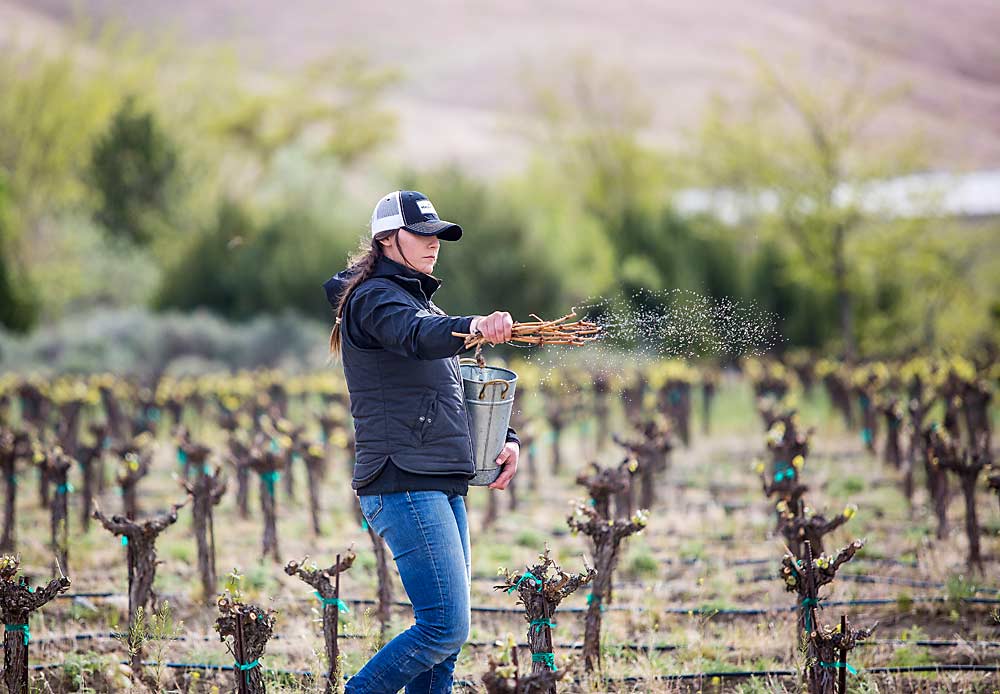
The crews at Hedges Family Estate in Benton City, Washington, bury manure-filled cow horns, harvest according to the lunar calendar and stir soil fertility preparations in harmony with the vortex of universal energy. But, no, they don’t dance naked under the full moon.
They’ve been asked that.
“The answer is no,” said Sarah Hedges Goedhart, general manager and winemaker at Hedges. “Even after a lot of wine, it’s no.”
By next year, Hedges will have completely converted all of its 110 acres to biodynamic, a 100-year-old mixture of philosophical and ecological farming practices gaining favor in the wine industry. Judging from Hedges, a global wine brand, producer of 60,000 cases and one of the founding members of the Red Mountain American Viticultural Area, the methods are not just hot among tiny boutique wineries.
Biodynamic farming requires vineyards to set aside 10 percent of their land as a preserve, reduce carbon footprints by producing all their own fertilizers and fight pests by planting predator habitat. The idea is to build a farm that sustains itself with minimal reliance and impact on the surrounding ecosystem. The rules take all the ethos of organic and go beyond.
“With organic, you’re still sort of fighting nature and killing things and being sort of responsive to things,” said Goedhart, also one of the Hedges family members who own the winery and vineyard.
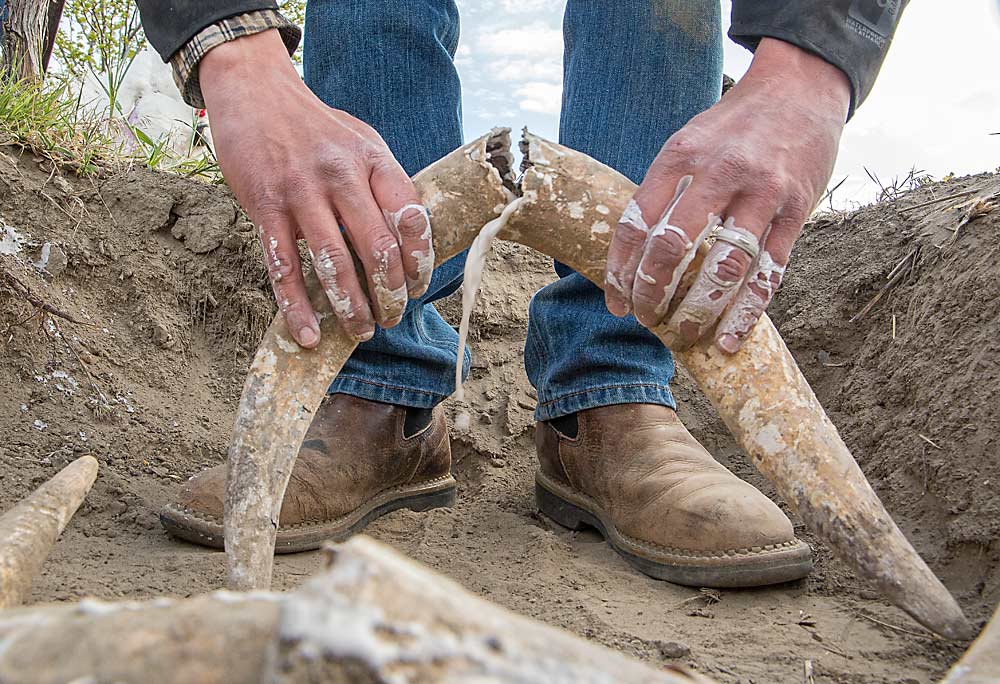
Taken seriously
Though Goedhart jokes about perceptions, the wine industry is taking biodynamic production seriously. The Washington Winegrowers Association included the topic on its annual conference agenda in March, scheduling a two-hour session to discuss the differences between natural, organic and biodynamic wines — “without casting judgements,” the agenda read.
During the industry’s current period of oversupply, wineries are looking for ways to differentiate themselves, said James Mantone, the session moderator, in a later interview. Biodynamic is one way to do that, especially with a growing consumer appetite for origin stories.
“There’s growing interest out there. The younger generation is more interested in where things come from,” said Mantone, a winemaker and vineyard manager for Syncline Winery in Lyle, Washington, where they farm using biodynamic practices but have not gone through the certification process. “Businesses that don’t acknowledge that are going to have some challenges.”
The biodynamic marketing cachet cannot be ignored, said Cole Sisson of Doe Bay Wine Co. in Eastsound, Washington. The movement is still small, but he considers it healthy for the overall industry.
“I thought this was a fad, but the demand is real,” the retailer said at the conference. “I was skeptical.”
Biodynamic viticulture, and biodynamic farming in general, is indeed on an upward trend, but it’s hard to quantify, said Rudy Marchesi, a Willamette Valley winemaker, grower and president of the Demeter Association, which certifies biodynamic farms. Many farmers following the methods do so out of an ecological ethos and never go through the certification process, though some farmers are looking to change that through the formation of a trade association.
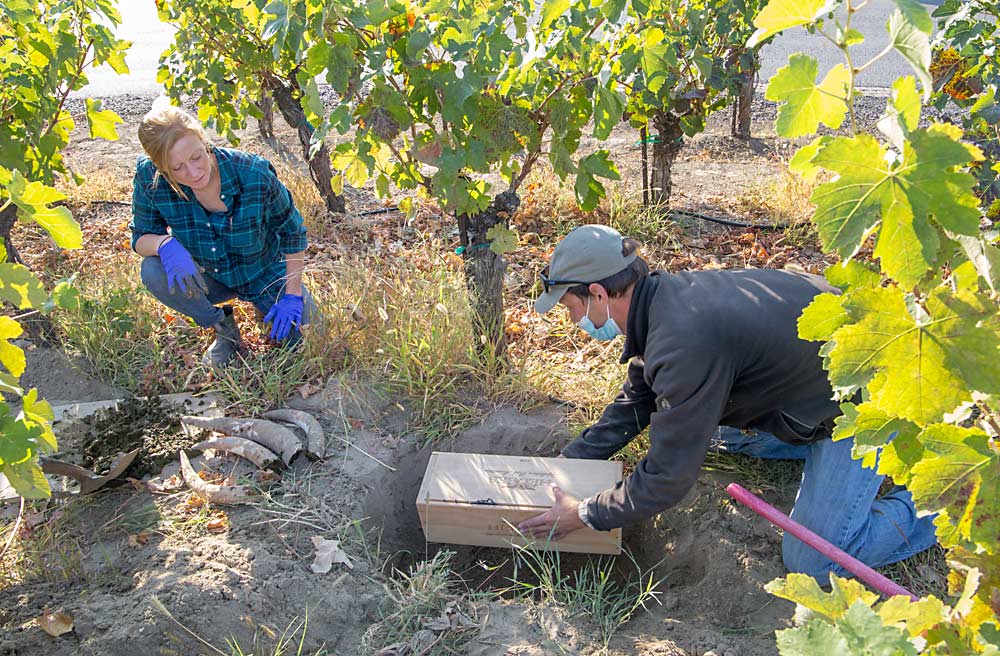
The United States has 92 certified vineyards and wineries, according to Demeter. California accounts for 41 (with 10 more in transition), Oregon 13 and Washington two. Worldwide, more than 600 wineries and 20,000 acres of wine grapes are certified as biodynamic. Demeter, which is in the midst of an organizational restructuring, did not have prior statistics to share, but when the group provided statistics to Good Fruit Grower in 2018 there were about 80 such vineyards and wineries in the U.S.
Meanwhile, the U.S. Department of Agriculture tallies organic wine grape acreage, but not biodynamic.
The biodynamic label can fetch a price premium. A 2016 paper by Washington State University economists determined “biodynamic” labels carried a higher price premium than labels with Salmon-Safe, organic or sustainable, while wine labels showing the Demeter certification did not — a finding the certifying organization questioned.
Marchesi said restaurants and shops in New York and Boston have biodynamic sections.
As for costs, the message was mixed. Marchesi and Mantone, who have each been farming biodynamically for more than 20 years, believe their costs are lower than conventional now. Hedges, which recently switched, has added at least 10 percent to its expense budget.
Scant research
There is little research about biodynamic viticulture, said Lynne Carpenter-Boggs, a soil scientist at Washington State University.
Studies by Italian researchers have found biodynamic treatments boost plant defense compounds, while other researchers have concluded that some of the preparations — herbal mixtures added to compost, soil or the plants themselves — have an auxin-like effect on plants, promoting growth.
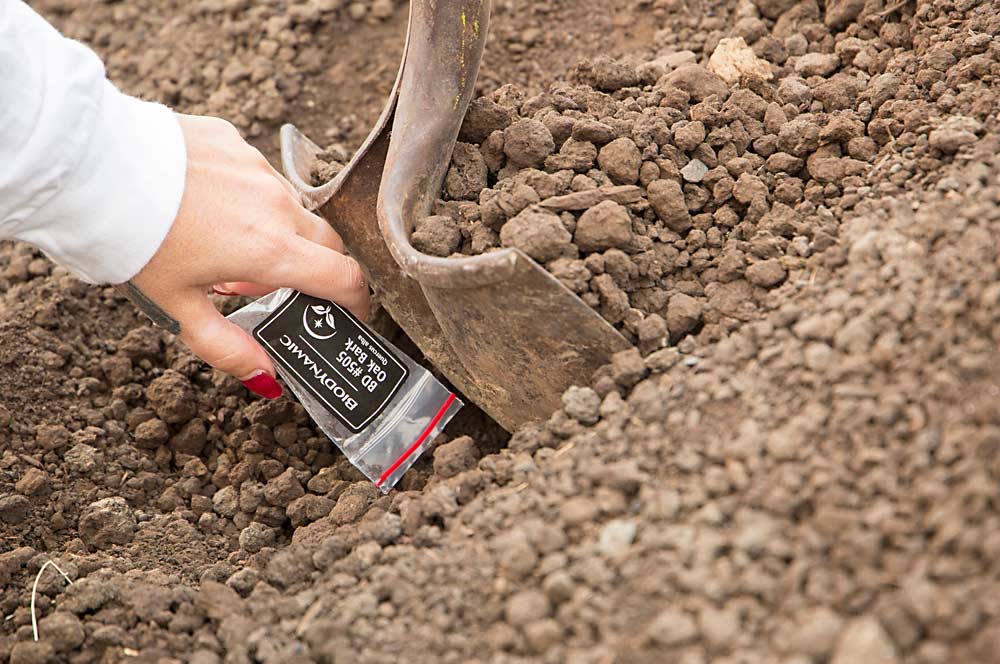
Carpenter-Boggs participated in studies that showed small increases in microbiological activity in soil treated with biodynamic preparations over organically treated soil. “Statistically barely significant,” she called those differences. But for a winery looking for a niche, those small differences might help, she said.
Biodynamic farmers add small volumes of preparations to relatively large piles of compost and wide swaths of soil. The preparations themselves have high microbiological concentrations, and scientists know that in other situations microorganisms communicate with each other through volatile hormones and respond with behavioral change. Nothing is proven in biodynamic preparations, but it’s feasible a little can go a long way, Carpenter-Boggs said.
“We know that this kind of thing happens in other environments,” Carpenter-Boggs said.
More importantly, in her opinion, biodynamic farming requires the use of compost. Quite objectively, that alone is a good thing for soil, she said.
“Compost is very important in improving the physical, biological and chemical aspect of the soil,” she said.
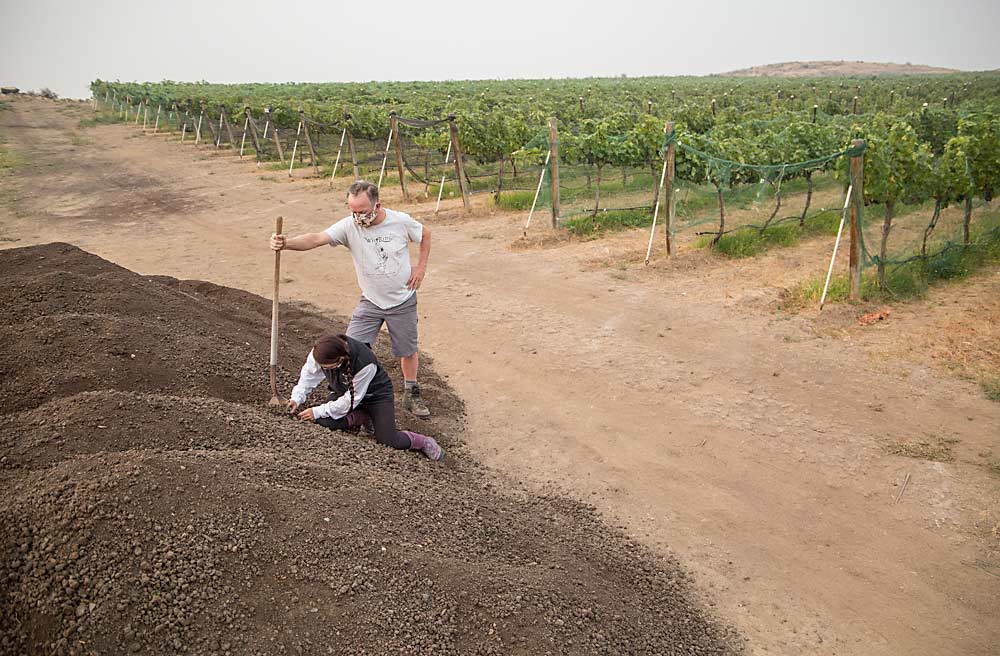
“It shows you care”
The biodynamic label signifies even more concern for the environment, workers and customers than does organic, said Paul Beveridge, owner and winemaker of Wilridge Vineyard, Winery and Distillery.
“It shows you care,” Beveridge said.
In their Yakima, Washington, vineyard in mid-September, Beveridge and assistant winemaker Lenora Thelen stirred one of their preparations in a white 5-gallon bucket, first clockwise to respect the order of the universe, then counterclockwise to honor chaos. Beveridge used a shovel to lift sections of dried manure while Thelen poured the solution into small holes. She also emptied Ziploc bags of solid preparations containing dandelion and oak bark into the pile. The additions activate the compost, Beveridge said.
“We’re telling it to wake up and do its job,” he said.
Like most growers, Beveridge and Thelen also employ more traditional farming methods. They use a handheld refractometer to measure Brix and cover their vines with nets to thwart bird damage, for example.
Beveridge farms apples, pears and wine grapes and makes wine and fruit brandy at a scenic homestead in Naches Heights overlooking a canyon of andesite cliffs. His whole farm is biodynamic, as are all of his estate beverage products. However, most of his customers don’t visit him for the biodynamic label; mostly the European tourists, especially those from Germany and Switzerland, seem to know what it means. He doesn’t notice a profit payoff.
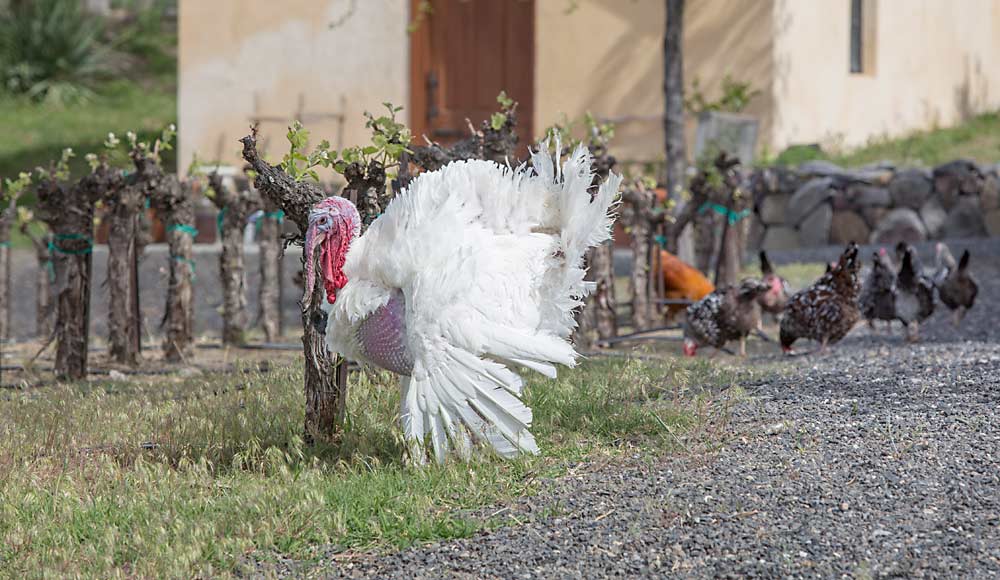
Many biodynamic growers themselves don’t claim to understand every detail. James Bukovinsky, the vineyard manager at Hedges and a graduate of environmental studies, believes in the ecological cause of biodynamic farming, he said. But some of the rules make him chuckle a little, he admitted. He still follows them.
Biodynamic agriculture takes criticism because it’s so vastly different than other forms of farming, said Marchesi of the Demeter Association. Though he winces at the term spiritual — “it’s not religion,” he said — the practices respect the life energy of all plants, animals and soil in ways that escape conventional scientific language and measurements. He compares the experience of the farming methods to those overwhelming moments when the mystery of life, the universe and everything defies description.
“If you’re not blown away by the beauty of all that, then you’re not paying attention,” he said. •
—by Ross Courtney

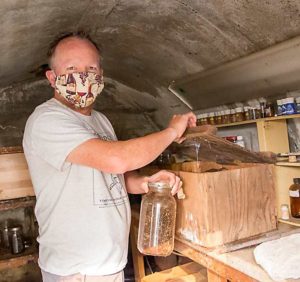





It is a unique farming technique that is not to be ignored, but cannot be widely recommended.
“… it is time the witch doctors were kicked from controlling viticulture!”
Dr. Richard Smart